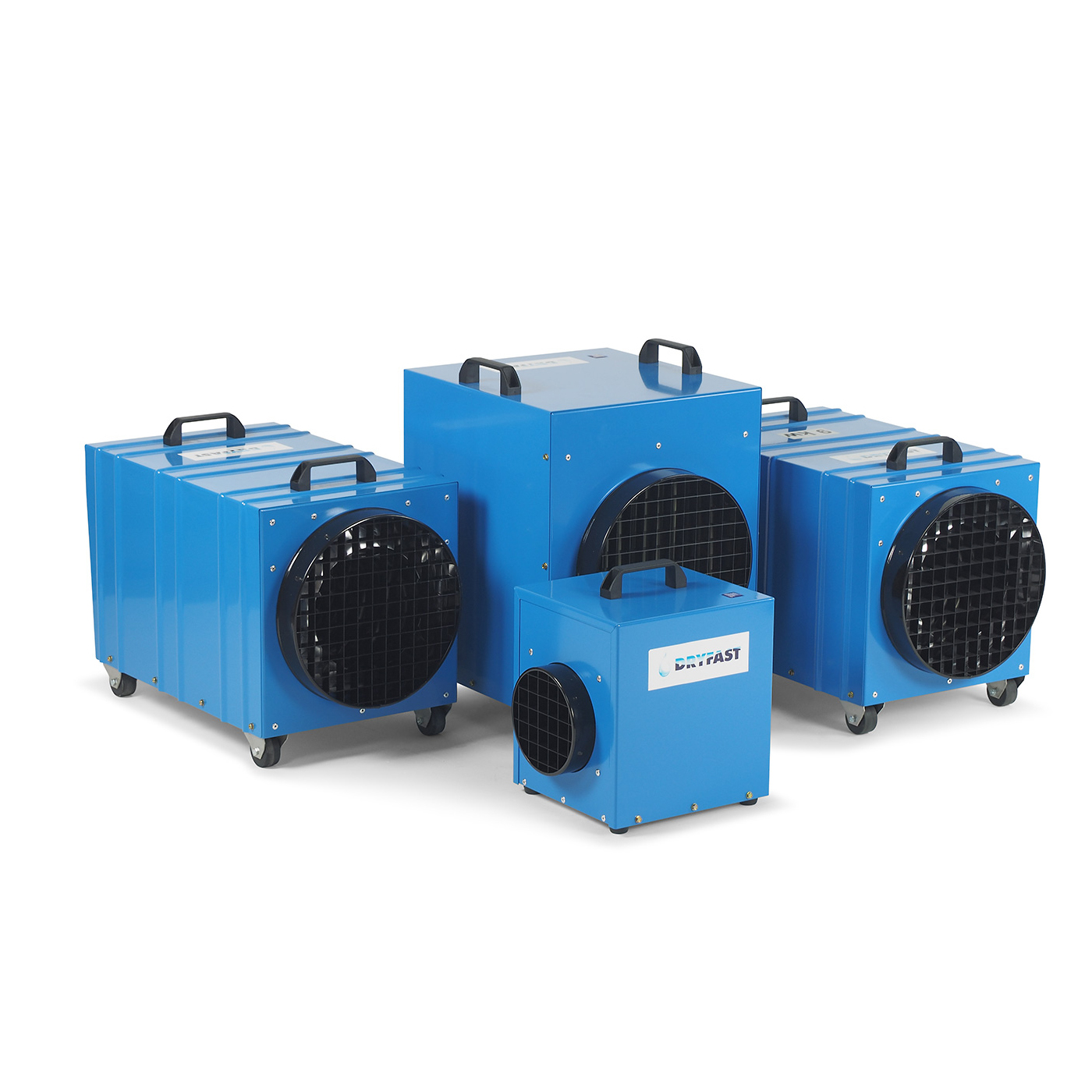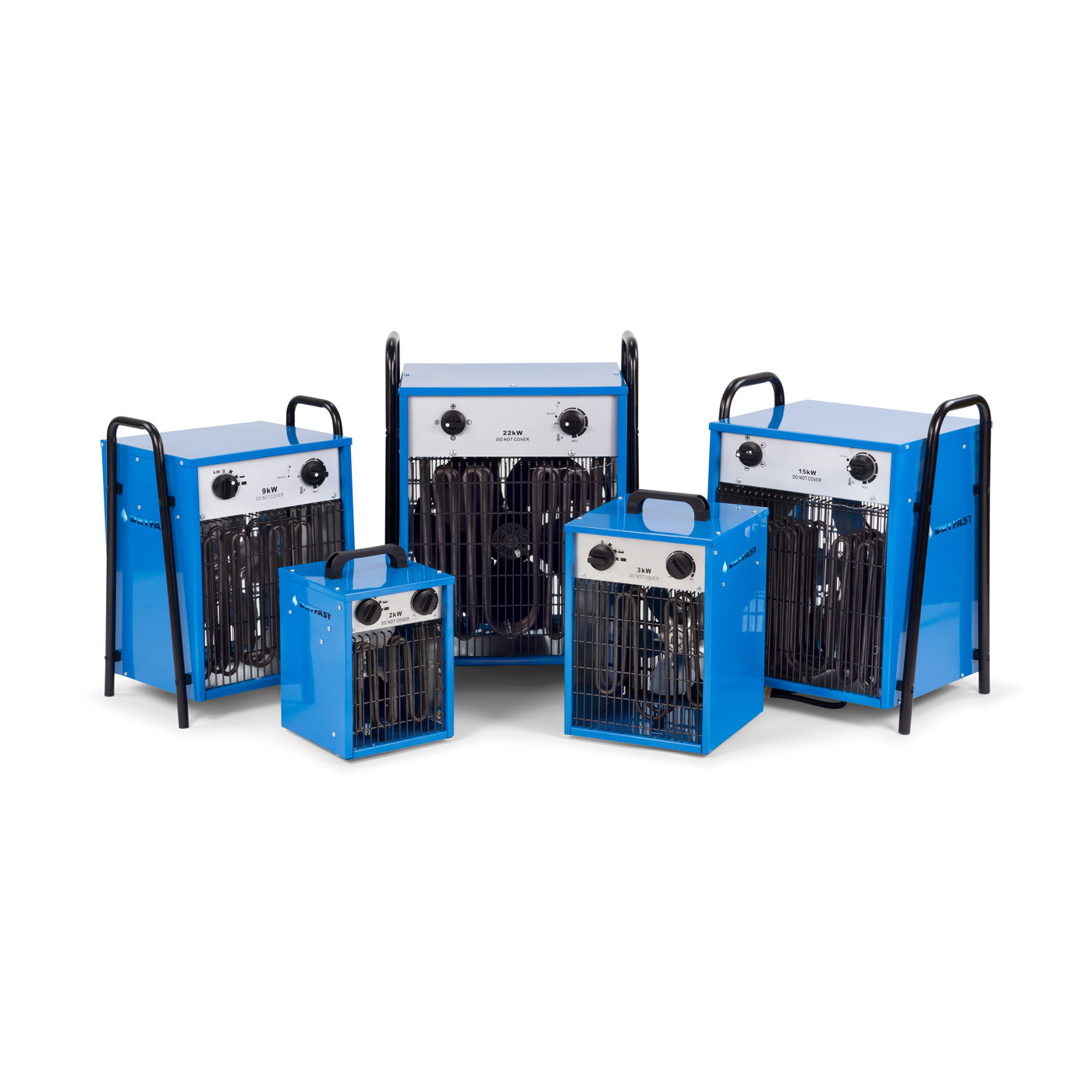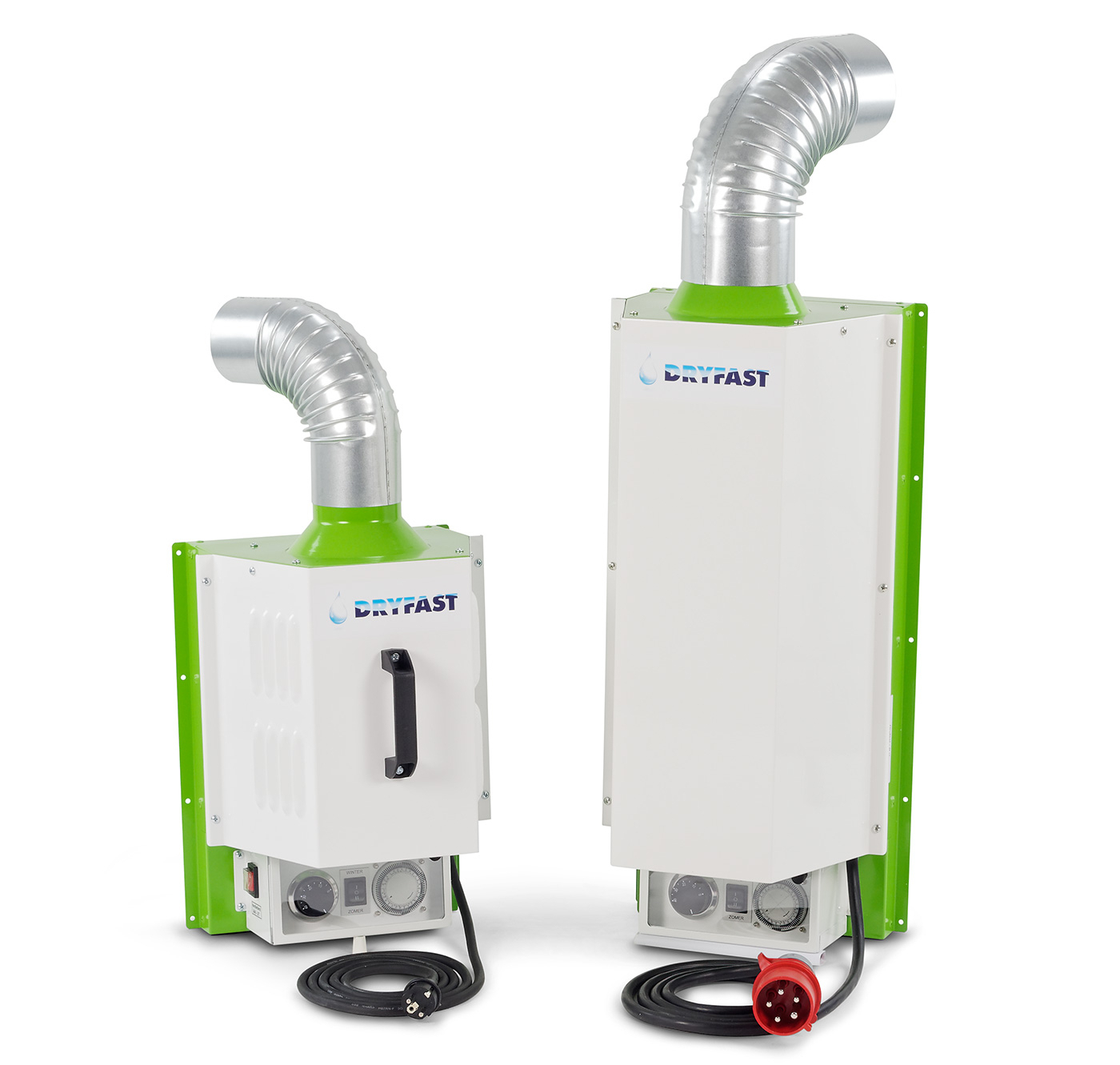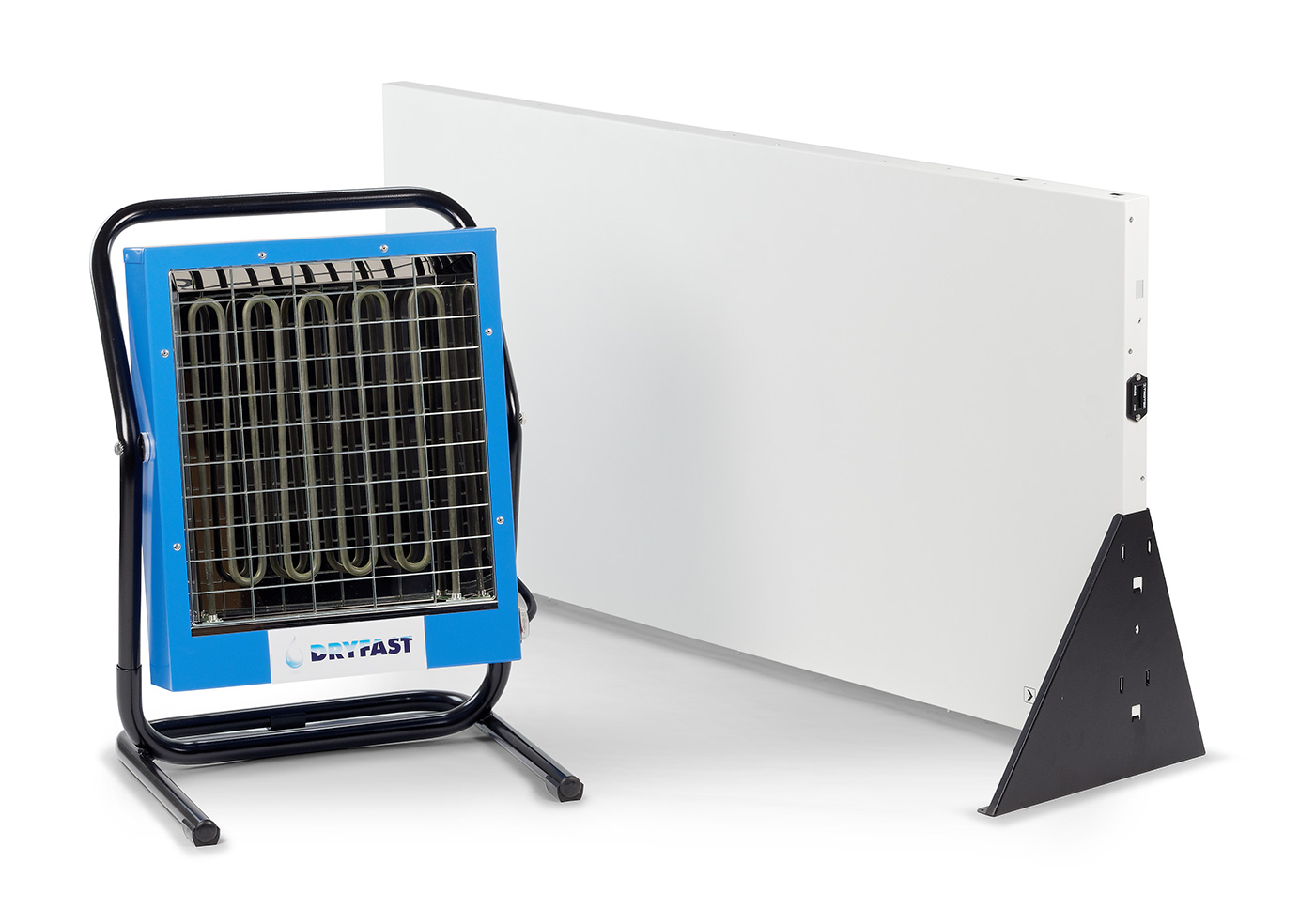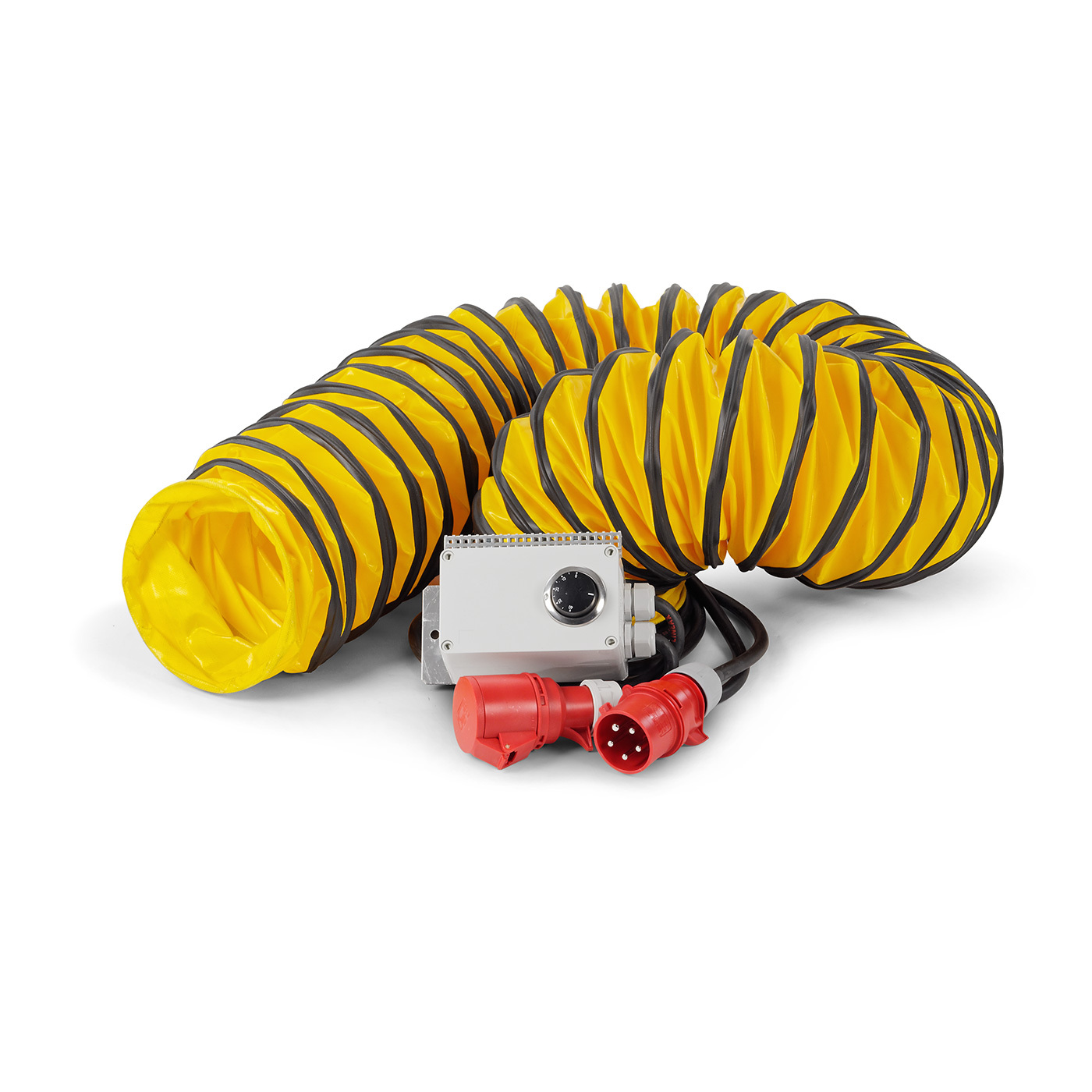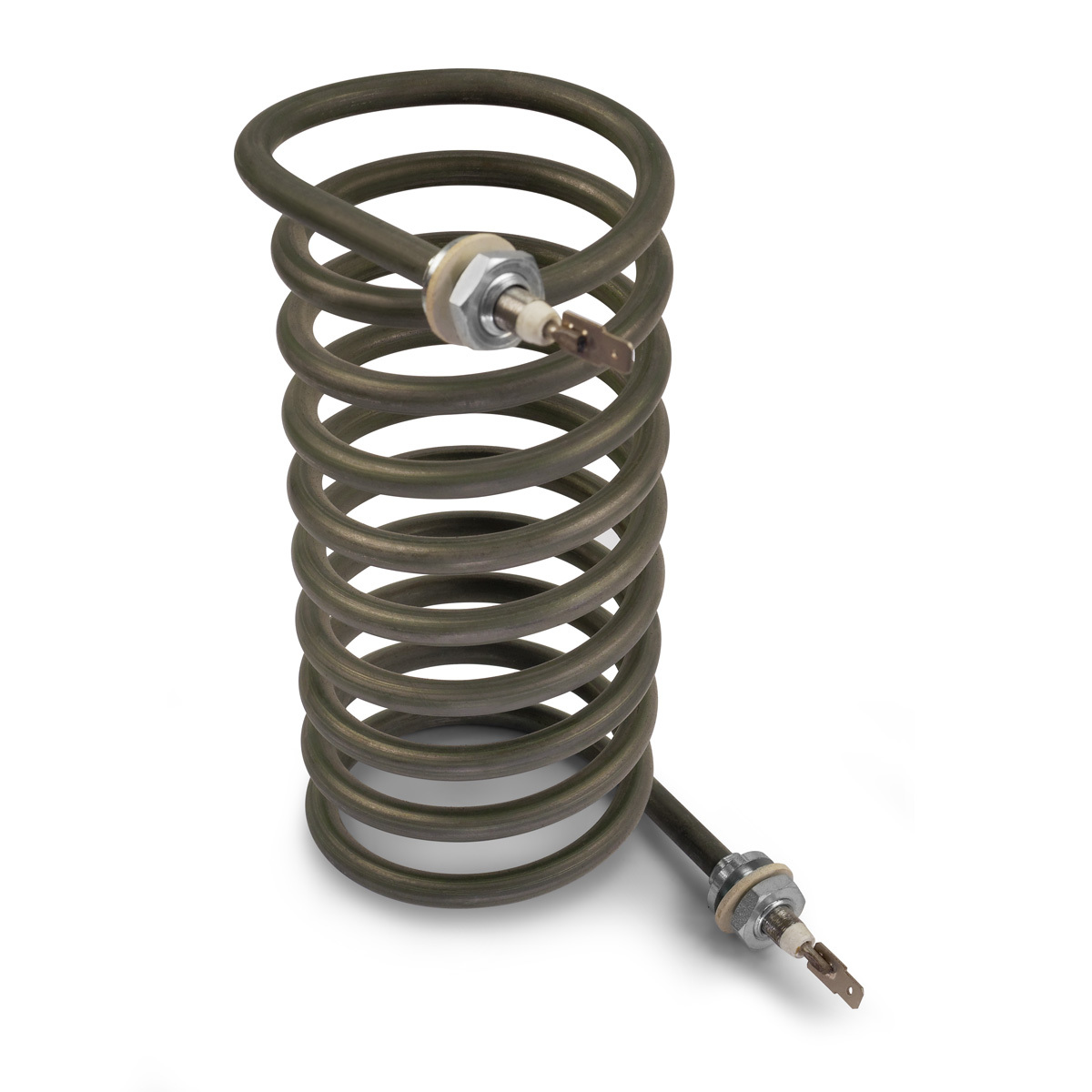A suitable electric heater for any application
We offer various types of electric heaters for all kinds of applications. One example is our DFE series. These electric heaters were developed to support drying processes in construction. Extremely robust, they are able to withstand an adult jumping up and down on top of them without any damage. Plus, they are impervious to phase changes or failures, something that tends to happen on construction sites.
When to use electric heaters?
Electric heaters are often used to support drying processes in the final stage of construction (together with a construction dryer and a fan) or to provide extra heating to a workplace, hobby room, temporary housing, etc. It is important to know what heater to use for your specific application.

Extremely efficient heating



Extremely robust for demanding circumstances



Double-walled (DFE) to avoid damage caused by fresh construction materials



Long heating range for perfect circulation



Extremely efficient heating



Extremely robust for demanding circumstances



Double-walled (DFE) to avoid damage caused by fresh construction materials



Long heating range for perfect circulation
What heaters to use and when?
- Electric construction heaters from the DFE series
One extremely important argument for using these electric heaters in the final stage of construction is the fact that these electric heaters come in a two-layered casing. As a result, this electric heater cannot overheat due to power outage which prevents it from damaging new floors. Something that single-walled heaters with post-cooling are prone to. In addition, special discharge grilles prevent the new floor from being blasted, or dry, warm air from being blown across the floor too fast. In short, the best solution for construction together with the Dryfast construction dryer.
- Electric construction dryers from the DFE-T series
The models from the T series come with radial fans, which allows you to connect hoses. These electric heaters are often used in the fire and water damage removal industry, to dry spaces that are difficult to reach such as suspended ceilings and crawl spaces.
- Electric heaters from the DEH series
In addition to the DFE series, we offer the DEH series; high-quality, stationary heaters that are extremely suitable for providing clean and dry heat to workplaces, warehouses, garages, etc.
- Electric clothes dryers
Both versions of the Dryfast clothes heater are meant to quickly dry work clothes in construction trailers, sports clubs fire stations, etc.
- Electric radiator
Electric radiators are used for direct workplace heating for tilers, painters, installation mechanics, etc.
What is the best place in a home to install an electric construction heater (DFE series) combined with a construction dryer?


Always prevent the heater from blowing in the direction of the construction dryer intake.
The combination of these two devices, fitted with an internal fan, ensures sufficient air displacement at the ground floor to accelerate the evaporation of moisture from walls, ceilings and flooring.
Can electric heaters prevent damage in construction?
The most important reason for using our DFE series in construction is the fact that these heaters will not damage fresh concrete floors younger than 30 days. The DFE series comes with a two-layered casing, which leaves the outer casing lukewarm when operational (especially at the bottom) as well as, and even more importantly, during power outages; a frequent occurrence on construction sites. Thanks to this casing, moisture necessary for the floor to strengthen during the first 30 days does not evaporate from the floor, preventing so-called “dusting” or “burning” of the floor. Unfortunately, single-walled electric heaters tend to cause this issue which is why several small and large contractors have prohibited the use of these heaters in the final construction phase and now require double-walled heaters.

